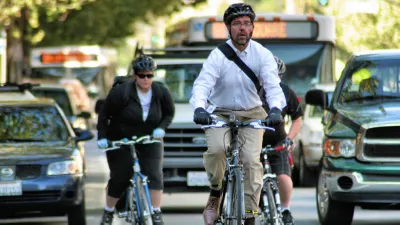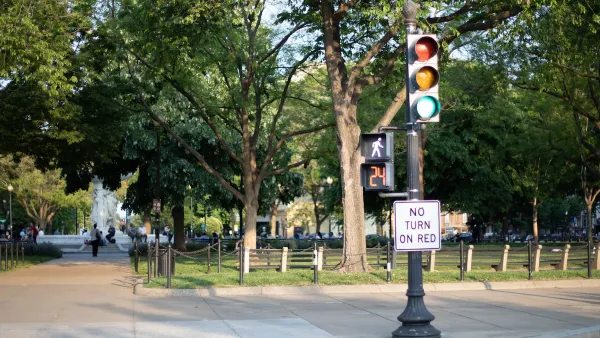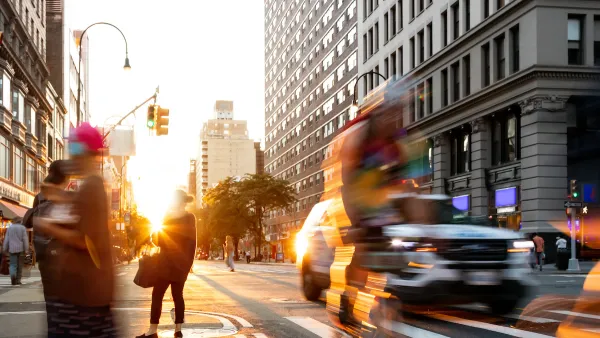A study examines whether and why bicyclists break traffic laws to shed light on how rational those laws really are.

In the Washington Post's "Tripping" blog, Fredrick Kunkle analyzes a study on the behavioral psychology of cycling. That is, the mental calculus cyclists perform to respond to variables like infrastructure, law enforcement, and other users of the road.
Perhaps unsurprisingly, Kunkle writes, "the upshot is that bicyclists are often trying to do the best they can when faced with moving dangers all around and a very small proportion of infrastructure restricted for their use."
The reason most bicyclists (71 percent) violate traffic rules is a bid for self-preservation. Other reasons include saving energy (56 percent) or saving time (50 percent) or attempting to increase one's visibility (47 percent). In other words, the study found that a large number of bicyclists tend to break the law because they think it will keep them safer.
If the way people ride bikes is a reflection of their needs on the road—along the lines of a desire path—then codifying the most common practices into law could better protect cyclists who find them necessary, the report suggests.
Kunkle's analysis comes ahead of the launch of dockless bikeshare in D.C., which is expected to expand ridership in underserved areas. Kunkle also examines other trends in the report, including how other road users navigate traffic laws and how cycling norms evolve in different places.

National Parks Layoffs Will Cause Communities to Lose Billions
Thousands of essential park workers were laid off this week, just before the busy spring break season.

Retro-silient?: America’s First “Eco-burb,” The Woodlands Turns 50
A master-planned community north of Houston offers lessons on green infrastructure and resilient design, but falls short of its founder’s lofty affordability and walkability goals.

Delivering for America Plan Will Downgrade Mail Service in at Least 49.5 Percent of Zip Codes
Republican and Democrat lawmakers criticize the plan for its disproportionate negative impact on rural communities.

Test News Post 1
This is a summary

Test News Headline 46
Test for the image on the front page.

Balancing Bombs and Butterflies: How the National Guard Protects a Rare Species
The National Guard at Fort Indiantown Gap uses GIS technology and land management strategies to balance military training with conservation efforts, ensuring the survival of the rare eastern regal fritillary butterfly.
Urban Design for Planners 1: Software Tools
This six-course series explores essential urban design concepts using open source software and equips planners with the tools they need to participate fully in the urban design process.
Planning for Universal Design
Learn the tools for implementing Universal Design in planning regulations.
EMC Planning Group, Inc.
Planetizen
Planetizen
Mpact (formerly Rail~Volution)
Great Falls Development Authority, Inc.
HUDs Office of Policy Development and Research
NYU Wagner Graduate School of Public Service




























